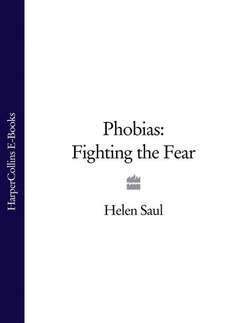Читать книгу Phobias: Fighting the Fear - Helen Saul - Страница 14
Locke and Empiricism
ОглавлениеAn alternative view is that reason does not come into it at all. The human mind is, in fact, like a blank sheet of paper. Ideas are generated through our physical senses and our experiences, and projected on to this blank sheet. We work on the information derived from our senses, make associations and generalisations and build up our psychological picture of the world. No matter how abstract or complex the idea, it begins with physical sensations. Even belief in the existence of God can be built up in this way.
These are the thoughts of John Locke, who was working soon after Descartes. He belonged to the opposite tradition in philosophy, empiricism, which rated experience above all else.
Learning and memory are built on experience alone, Locke said. Phobias are therefore learnt as the result of a bad experience. And like behavioural therapists today, he said that fear can also be unlearnt through experience. Locke’s most important work was the Essay Concerning Human Understanding, published in 1690. His advice on dealing with irrational fears could have come straight out of a modern behaviour therapy textbook:
If your child shrieks and runs away at the sight of a frog, let another catch it and lay it down at a good distance from him; at first accustom him to look upon it; when he can do that, to come nearer to it and see it leap without emotion; then to touch it lightly, when it is held fast in another’s hand; and so on, until he can come to handle it as confidently as a butterfly or sparrow.
Empiricists like Locke would be at home talking to behaviour therapists in the twenty-first century.
Behaviourism aligns itself with empiricism in the same way that cognitivism is linked with rationalism. These two schools of thought have continued through history like parallel lines, never getting any closer to each other. They ask different questions and look for different answers. Empiricists and behaviourists want to know what a boy does if you send a dog into the room where he is sitting. Rationalists and cognitivists ask why the boy starts screaming and climbs out of the window.
Unfortunately, accurate observation and brilliant insights did not necessarily translate into practical and humane treatments. The seventeenth and early eighteenth centuries may have been a time of rapid progress in theories of learning and thinking, but people with anxiety disorders probably shrank from some of the proffered cures. The physician Thomas Sydenham suggested that hysterical disorders or today’s anxiety disorders could be helped with ‘bleeding, purging, opiates, foetid medicines, chalybeate medicines, filings of steel and rhenish wines, plaister at the navel, hysteric julap, opening pills or electuary’. Another writer regarded anxiety as a symptom of cardiac disease and recommended ‘narcotics and anodynes, mucilages, things fat and emplastik, emulsions and roborants’. Royalty escaped lightly in comparison, and Queen Anne’s physician Sir Richard Blackmore used opium because, he wrote in 1725, ‘It calms and soothes the disorders and perturbations of the animal spirits.’
Treatment provided by the clergy was, perhaps predictably, more orientated towards ‘mind’ than ‘body’. One minister thought that the key to treating anxiety was to ‘put them in a Pleased condition’. Another clergyman who specialised in ‘Spiritual physicke to cure the diseases of the soule’ was effectively an early psychotherapist and recommended the use of silence.
